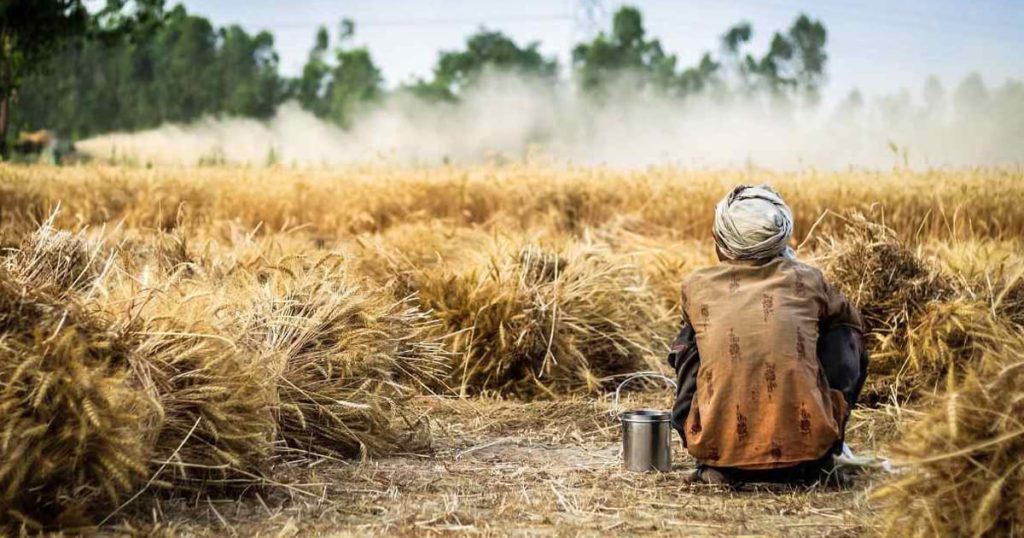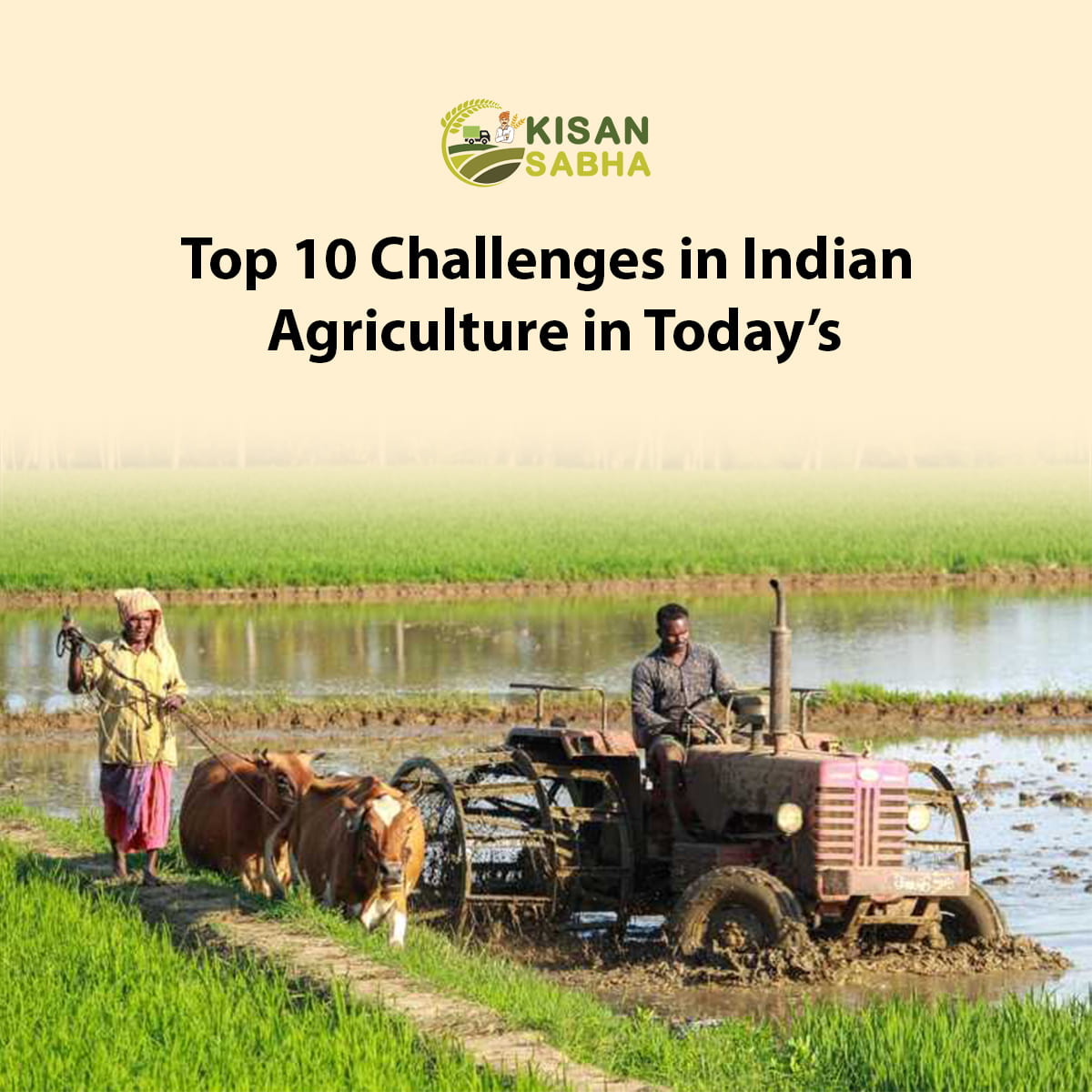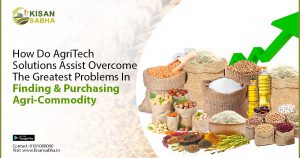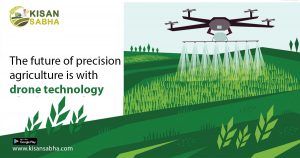India is a land of villages whose residents opt for the agricultural profession. Adopt an agriculture professional with happiness because it is the lifeline of the Indian economy. The demographic reveals that agriculture makes a nearly 18 percent contribution to the country’s GDP. In addition, almost 50 percent of the population gets employment in their rural area. Due to internal and external chaos, Indian agriculture challenges are bound to happen. Do not be passive about its happenings. But you take the bold step to overcome it. Addressing these challenges is essential so that migration and food security do not have a bad impact at any cost.
No matter where you live, agricultural challenges impact farmers’ lives. But farming practice and other work demand resources and time. Paying their full devotion is not easy for all farmers. Many times, these agricultural challenges happen at the micro level. So, food supply industries go unnoticed. From an exceptional productivity and high sustainability viewpoint, the farmer must be familiar with the highlighted challenges. Do not take it lightly, and take a cursory look.

10 Challenges in Indian Agriculture
Inadequate Transport
Farmers make up 100% to add quality to their produce. As a result, their agri startup crop sounds much better than normal crops. But, there is no use in your effort if your yield does not reach potential buyers. Do you have a concise idea of what the major hurdle is to accessing value and yielding to the right customers at the right time?
Indeed, transport scarcity is one of the big issues that puts a barrier to entering the global market. As a result, farmers are forced to sell their produce in the local market. No matter how much bargaining this diligent farmer does, they hardly earn decent money for their produce. They are helpless to supply their produce in the high-value marketplace.
Limited Capital
The valued product needs modern resources to enhance its agricultural efficiency. But insufficient capital permits for limited resources. As a result, farmers are compelled to compromise with prospering crop cultivation. If fund issues remain active, then you sacrifice many agricultural concerns. In other words, you cannot expect yield quality and quantity supremacy. The developing countries like India have this issue, capital scarcity does not permit them to invest in technology and equipment. So, farmers grow only low-quality produce whose standard price is below your expectations.
Agriculture Marketing
Many traditional farmers’ minds pop up to find high-paying and easy-to-convince customers. Is there a proven way to find out the high-ticket customer? Agriculture Marketing is a proven way to find out the relevant buyers through the use of an advanced marketing platform. Anyway, agri marketing runs in different channels. In short, it includes spotting customers for your cultivated product, price negotiation, goods transportation, and feedback for agricultural products. While implementing the valuable marketing hierarchy, you find the potential customer. But you do not bring your customer into the wrong trap. It means that you do a proper mandi price investigation. The sum and substance is that you do not set too much or too little price. Otherwise, you play a bad bargain with your brand reputation.
Soil Erosion
The crop gets its main nutrients from the soil of the farmland. But what will happen if the upper layer loses its nutrient elements? Soil erosion has a dramatic negative impact as excessive wind and water pressure move soil particles from one place to another. The crop quality and quantity suffer as there is a dramatic loss in the land’s fertility potential. So, it is a serious problem for farmers.
Furthermore, soil erosion takes place due to over-tillage. Anyway, continuous practice will erode soil quality and absorb less water volume. The flooded area removes the top layer of soil. But one should do the right practices. Farmers should limit their irrigation and use mulch and cover crops. In addition, farmers should prevent their fields through overgrazed.
Also Read:- What is Organic Farming: Its Challenges and Solutions
Small and Fragmented Landscape
The land distribution of all farmers is not the same. A few farmers have a small and fragmented landscape. Hence, they define certain limits to sow crops and get the normal harvesting consequence. The limited crop production does not result in more profit. Turning a small farming space is not possible with normal earnings.

Water Scarcity
India has a high population, whose citizens are highly dependent on agriculture. But, accessing a prosperous agricultural yield is a consequence of better water management. The water level has dropped due to excessive usage in the high-population belt. In this way, water-friendly products bring big challenges to customers.
Labor Shortage
The agricultural practices are not under the control of a single person. If you maintain the quality and precision, then you associate with labor. But the migration policy in different cities will let down your confidence in agriculture. On the other hand, people do not take agriculture as a serious career. So, you do not continue manual agriculture efforts on your behalf.
Pests and Diseases
Flourishing agricultural produce is not possible unless your plants are free from insects and other related creeping species. No matter how much precaution you take, there might be an attack of a disease. They do not let your harvest grow as per your expectations.
Food Security
India’s population is consistent to grow. Therefore, its citizens are likely to face food insecurity. So, farmers should grow their yields as much as they can. In this way, they seek the imperative solution to overcome food insecurity.
Climate Change
Climate change is a major key factors that harm your productivity level. In this way, the weather pattern differs a lot and has an indirect impact on your crop. So, one should use the conventional method to deal with agricultural challenges.
Conclusion
Do not take agriculture professionals for granted, especially for better wealth prospects. Expecting fruitful yields happens easily if you embrace advanced technology to increase efficiency, reduce manual effort, and minimize resource utilization. But farmers should make a consistent effort and use the out-of-the-box hierarchy to swiftly deal with agricultural challenges. The concerning impact is not noticed within a definite timeline, but it drops productivity after letting pitfalls. Taming the agricultural challenges is not your business, but you use impeccable practice that pays off your efforts. Be realistic, and you let go of challenges and substitute them with strong solutions.





